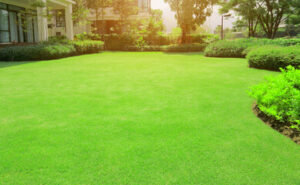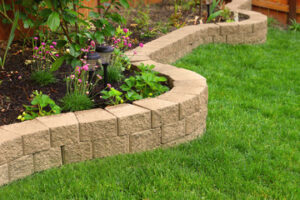Landscapers use a variety of techniques to transform natural spaces. They may install retaining walls to level and shape sloping land, create walkways and patios, and incorporate water features like pools or fountains.

A well-groomed yard can add a significant amount of value to your home. It also enhances your lifestyle and provides many health benefits. Get in touch with Landscaping Fayetteville AR for professional support.
Color is one of the most rewarding and challenging aspects of a landscape to work with. The appropriate use of color helps to create a sense of personality in the landscape, while contributing to the chromatic synthesis of a landscape picture (sometimes referred to as environmental color).
Landscape color can be a great way to draw attention to focal points or make a small space feel bigger. It can also be used to enhance the sense of harmony and balance between natural elements and man-made features. The color wheel is an excellent tool to use in guiding your landscape color choices. It breaks down the colors of the rainbow into primary and secondary colors, showing how they combine and which are warm or cool. It is important to remember that color has three properties – hue, value and intensity.
The first property, hue, refers to the purity of a color. For example, a yellow rose has a higher hue than a purple penstemon. Value refers to how light or dark a color is, while intensity describes the strength of the color. It is important to consider these attributes when selecting plants for your garden.
In the landscape, color can be found in flowers, trees, foliage and bark, pavers, walls, and structures. It can also be added through the use of a water feature, furniture and other decorative items.
A landscaping professional can help you select a variety of different color schemes for each garden area or planting bed. A good starting point is to choose a main color and then add tints or shades of that color for contrast. A monochromatic design is another popular choice.
Form
Landscape form is the three-dimensional aspect of design that adds structure and definition to outdoor spaces. It can be expressed through natural shapes of trees and plants or through built elements like pergolas and arbors.
Form contrasts with line, which describes the two-dimensional attributes of a space. Lines can direct the eye to a focal point or distract the eye from something you want to disguise. The lines may be straight, curved, horizontal, vertical or diagonal. The form of a plant may be described by its branching structure, growth habit, or how it has been trimmed to shape. The use of form creates structure and a sense of order in the landscape, and it can be used to create formal or informal spaces.
The use of repetition in line, shape, color and texture also creates rhythm in the landscape. Repetition must be balanced with other design elements to avoid monotony. A variety of forms and textures are also important to a landscape, as they provide different experiences for visitors. For example, a garden with low plants and tall trees provides different views and spaces to explore. A diversity of plant forms is also important to encourage biodiversity in urban environments, as different shapes attract specific pollinators.
A well-designed and maintained landscape can improve the quality of life for homeowners. It can reduce stress levels, enhance mood, and increase property values. Studies show that just looking at nature can lower blood pressure and slow the heart rate. In addition, spending time in nature can lead to the release of endorphins, the body’s natural “feel-good” chemicals.
Landscaping is also an investment in a community’s future. A study found that neighborhoods with landscaped front yards had higher home values than those without. In addition, community green spaces promote health and wellbeing. For example, walking through a park can help relieve depression and anxiety, and the presence of trees and shrubs can improve air quality by reducing pollutants.
Lines
The lines that are created in a landscape design are used to control movement, accentuate features and create a sense of direction. These lines can be horizontal, vertical, diagonal or curved and are a key element in the overall composition of the space.
Straight lines communicate a formal and forceful character and are often associated with symmetrical balance. They will direct the eye directly to a focal point without any meandering and can be found in hardscape edges and materials, like paving, walls and plant beds.
Curved lines are more natural and relaxed and are often used in nature-inspired gardens. They are also more soothing for the eyes and can add a sense of mystery, as they move at a slower pace and hide some of the composition from view. They work well for pathways, garden beds and dry stream beds.
Horizontal lines will pull the observer’s eye along the ground plane and can make a space feel larger. Taller plant material or structural features, such as an arbor, can help create these horizontal lines in a garden.
A landscape design should use a mix of both straight and curved lines to create harmony in the composition. As a rule, acute angles should be avoided, as they can be awkward to the eye and can create weak areas in the landscaping materials. For example, a sharp angle in concrete can develop a crack and, in lawns, can create tight spaces that are difficult to mow. The use of repetition in a landscape can create rhythm and a sense of unity, but this is an important tool that must be used with care – too much repetition can become monotonous.
Texture
While most people consider color to be the most important element of landscape design, texture is a key building block. It can soften spaces, provide contrast and fashion backdrops and moods.
Plants and hardscape materials have a variety of textures, from fine to coarse. These include the shape of the leaves, blades of grasses, bark and twigs. In addition, the overall branching pattern and size of a plant also impact its texture. Creating a balanced texture in your garden is essential for creating a rich tapestry of visual delights.
Using different textures to create depth and interest in the garden is not only attractive, but can help to alleviate stress, according to many studies. When it comes to landscaping, textures can be created with both plants and hardscapes such as retaining walls, patios, walkways and fences. By adding a combination of these different elements to your landscape, you can create a beautiful, peaceful place to relax and unwind.
The use of texture can create a sense of movement in your garden, making it feel larger or smaller. For example, placing fine textured plants toward the back of a garden creates a feeling of distance. Conversely, if you have coarse textured plants in the front, they will draw the eye and create a more intimate space.
Texture is not limited to only the foliage and woody components of a plant, but can extend to the flowers, seeds and even the soil beneath your garden. The type of mulch you choose will also affect the texture of your landscape. For example, shredded mulch has a more finely textured look than large nuggets of bark.
The landscape designer will know the proper balance of different plant textures to achieve a unified, harmonious whole. However, it’s up to the homeowner to keep in mind that these elements need to be maintained in order for your garden to look its best.
Balance
One of the most important elements to consider when designing your landscaping is balance. The right kind of balance will create a space that feels harmonious, serene, and peaceful. It is achieved through the distribution of visual weight among different elements. Balance can be accomplished through a variety of techniques including repetition, contrast, and scale.
The first step to creating a balanced landscape is to consider the overall proportion of each element. For example, the size of your house should be reflected in the size and proportion of other outdoor features such as planting beds, trees, and hardscape elements. Proportion is also essential when considering the height of plants and hardscape elements. For example, taller plants should be paired with shorter ground covers and larger rocks to help achieve a sense of balance.
Another aspect to consider when considering balance is color. Different colors have varying visual weights and can affect how your landscape feels. For instance, warm colors such as reds and oranges tend to feel heavier than cool colors such as blues and greens. The use of color is an easy way to add interest and excitement to your landscape while maintaining a sense of balance.
Balance is often overlooked by homeowners when planning their backyards. However, it is a crucial part of any good design and will make your yard look like you hired a professional to do the work. The right landscaping balance can help your yard feel clean and cohesive, even though it may be difficult to accomplish without the aid of a skilled landscaper. So the next time you see a landscape design you love, take note of how it’s balanced and try to emulate those qualities in your own yard.

